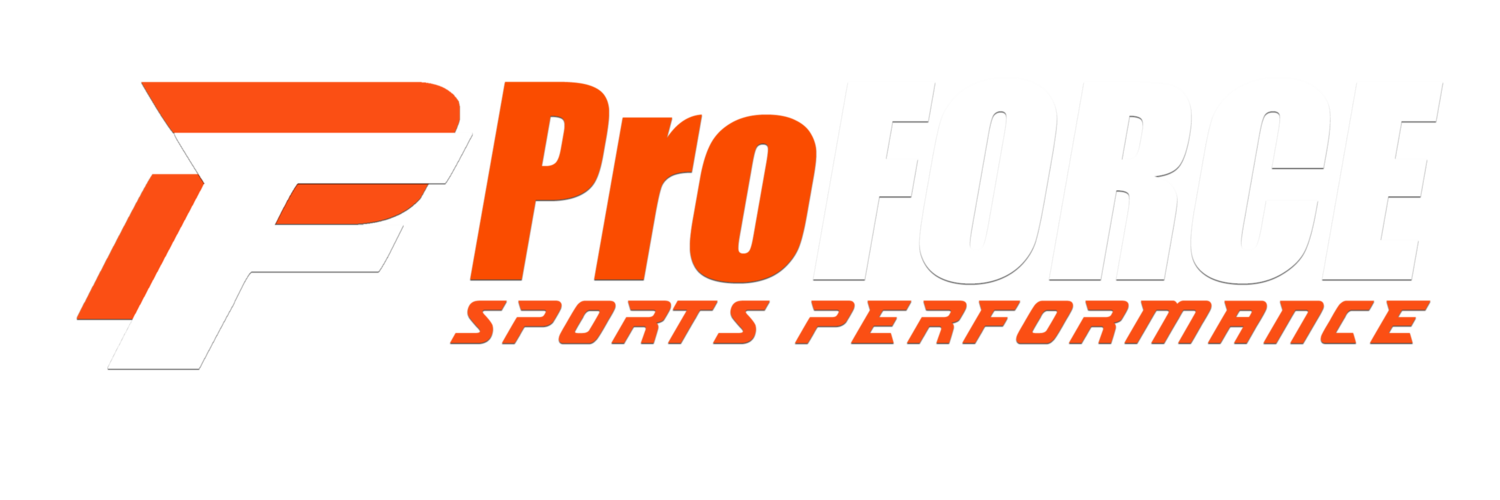ProForce's advanced athletic assessment provides the athlete with a complete picture of their overall athleticism. We are able to provide critical and valuable information to every athlete that will be a comprehensive review of their body, athletic condition, and methods to reduce and prevent injury.
We will assess and predict your capabilities in the sphere of performance:
Completion of field test helps us create a profile of athletic performance that will drive the prioritization of training
We will identify performance deficits and energy leaks that we will prioritize in the training process
The profile helps with talent identification
Allows us to monitor training adaptation and readiness
Our Profile:
Statement of Goals
Statement of Strengths/Weaknesses
Nutritional Behavioral Questionnaire & Profile
Functional Movement Screen (FMS)
Sport Specific Power, Speed, and Agility Testing
Foot Strike/Balance Testing (sport-determined)
Static Flexibility/Joint System ROM-Symmetry Testing Specific to Your Sport
The key things the athlete and/or coach will take away are a firm understanding and inventory of their body, both from a base and higher-level functional pattern. Our mission is to enable the athlete to be a better, more efficient and effective version of themselves with a more targeted approach to training, leading to improved results. Until we know how to train you, we can not help you achieve your goals. Our evaluation process helps us figure out how to properly train your body.
BACKED BY 15 PLUS RESEARCH ARTICLES:
•1). Baker, Daniel, and Steven Nance. "The Relation Between Running Speed and Measures of Strength and Power in Professional Rugby League Players." The Journal of Strength and Conditioning Research 13.3 (1999): 230-235. Print.
•2). Barr, Matt, and Volker Nolte. "Which Measure of Drop Jump Performance Best Predicts Sprinting Speed?." Journal of Strength and Conditioning Research 25.7 (2011): 1976-1982. Print.
•3). Cronin, John , and Keir Hansen. "Strength and Power Predictors of Sports Speed." Journal of Strength and Conditioning Research 19.2 (2005): 349-357. Print.
•4). Fairchild, B.P., W.E. Amonette, and B.A. Spiering. "Prediction Models of Speed and Agility in NFL Combine Attendees." The Journal of Strength and Conditioning Research 25.1 (2011): S96. Print.
•5). Green, B., Blake, C., & Caulfield, B. (2011). A Valid Field Test Protocol of Linear Speed and Agility in Rugby Union. The Journal of Strength and Conditioning Research, 25(5), 1256-1262
•6). Holm, David, Markus Stalbom, Justin Keogh, and John Cronin. "Relationship Between the Kinetics and Kinematics of a Unilateral Horizontal Drop Jump to Sprint Performance." Journal of Strength and Conditioning Research 22.5 (2008): 1589-1596. Print.
•7). Kale, Mehmet, Alper Asci, Coskun Bayrak, and Caner Acikada. "Relationship Among Jumping Performances and Sprint Parameters During Maximum Speed Phase in Sprinters." Journal of Strength and Conditioning Research 23.8 (2009): 2272-2279. Print.
•8). Little, Thomas, and Alun Williams. "Specificity of Acceleration, Maximum Speed, and Agility in Professional Soccer Players." Journal of Strength and Conditioning Research 19.1 (2005): 76-78. Print.
•9). McCurdy, Kevin, John Walker, George Langford, Matt Kutz, James Guerrero, and Jermey McMillan. "The Relationship Between Kinematic Determinants of Jump and Sprint performance in Division I Women's Soccer Players." The Journal of Strength and Conditioning Research24.12 (2010): 3200-3208. Print.
•10). McGuigan, Michael, Timothy Doyle, Michael Newton, Dylan Edwards, Sophia Nimphius, and Robert Newton. "Eccentric Utilization Ratio: Effect of Sport and Phase of Training." Journal of Strength and Conditioning Research 20.4 (2006): 992-995. Print.
•11). Nimphius, Sophia, Michael Mcguigan, and Robert Newton. "Relationship Between Strength, Power, Speed, and Change of Direction Performance of Female Softball Players." Journal of Strength and Conditioning Research 24.4 (2010): 885-895. Print.
•12). Serpell, B., Ford, M., & Young, W. (2010). The Development of A New Test of Agility For Rugby League. The Journal of Strength and Conditioning Research, 24(12), 3270-3277.
•13). Shalfawi, Shaher , Ammar Sabbah, Ghazi Kailani, Espen Tonnessen, and Eystein Enoksen. "The Relationship Between Running Speed And Measures of Vertical Jump In Professional Basketball Players: A Field-Test Approach." The Journal of Strength and Conditioning Research 25.11 (2011): 3088-3092. Print.
•14). Sheppard, J.M., W.B. Young, T.L.A. Doyle, T.A. Sheppard, and R.U. Newton. "An Evaluation of a New Test of Reactive Agility and its Relationship to Sprint Speed and Change of Direction Speed." Journal of Science and Medicine in Sport 9 (2006): 342-349. Print.
•15). Young, W., Cormack, S., & Crichton, M. (2011). Which Jump Variables Should Be Used to Assess Explosive Leg Muscle Function?.International Journal of Sports Physiology and Performance, 6, 51-57.



